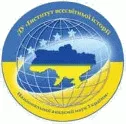The Hungarian Revolution of 1956: Causes, Effects and Lessons (Part 1)
Main Article Content
Abstract
Objective and subjective, interior and international causes of the Hungarian Revolution of 1956, its drivers and consequences are highlighted in the article. The author pays attention to the fact that the major goal of the uprising was not to overthrow, but to improve the socialist order, turn down Matyas Rakosi’s personality cult, correct hard mistakes and bring perpetrators to justice. The article shows that democratic forces of Hungary gave rise to peaceful removal of Stalin’s state structure and to formation of the democratic socialism with national features. The author states that provocations and military interference of the USSR into home affairs of Hungary were the principal cause of mass uprising of civil population. He also underlines that the Revolution leaders took into account interests of the USSR, they were constantly holding talks with Soviet management, and avoided involving power structures (army, police, security forces), except some certain commanders and units into combat actions against occupation of Hungary. The author points out that not a single country in the world stood up to defend and support Hungary, and stresses that the Revolution ideas were put into practice in evolution way during 70-80s of the XX century.
Downloads
Article Details
References
Sulyok D. A Magyar tragedia. A Trianoni beke es kovetkezmenyei. – Neewark, 1954. – 512 o.
Nepszava. – 1952. – Augustus 15.
Tanulmányok a magyar forradalomról. Szerk. Borbándi Gyula, Molnár József. – München, Aurora Könyvek, 1966. – 680 p.
Ungvary K. Magyar 1956-os Forradalom. – [Elektronnyj resurs]. – Rezhym dostupu: htth://urokiistorii.ru/memory/conf/52046
Tamás G.M. Fölszabadulás // Nepszabadsag. – 2005. – Aprilis 4.
Hunya Istvan visszaemlekezese. – Bp., 1978. – Decembe 12. Spogady I. Hunja znahodjat'sja u vlasnosti avtora.
Anderson A. Die Ungarische Revolution 1956. – Hamburg, 1977. – 303 s.
Berend T.I. A szocialista gazdaság fejlődése Magyarországon, 1945-1968. – Budapest: Kossuth – Közgazdasági és Jogi Könyvkiadó, 1974. – 236 p.
Cseszka E. Az 1956-os forradalom gazdasagi okai. – [Elektronnyj resurs]. – Rezhym dostupu: www.valosagonline.hu/index.php?oldal=cikk….O
Munnich F. Egysegben a bekeert, a szocializmusert. – Budapest: Kossuth kiadó, 1959. – 210-211 o.
Nagy I. Egy évtized. Válogatott beszédek és írások 1948-1954. II. kötet. Szikra. – Budapest, 1954. – 600 p.
Bodnar L. Megelozhetok-e a koncepcios perek ? // Nepszabadsag. – 2005. – Junius 28.
Punkosti A. Rakosi bukasa, szamuzetese es halala. 1953-1971. Europa konyvkiado – Bp. – 2001. – [Elektronnyj resurs]. – Rezhym dostupu: http://mek.oszk.hu/05300/05385/05385.htm
Rakosi bukasa // Nepszabadsag. – 1992. – Julius 16.
Vyda Y. Vengryja, 23 oktjabrja – 4 nojabrja 1956 goda. Dokumentы k ystoryy nacyonal'nogo vosstanyja // Vengerskyj merydyan. Zhurnal obshhestvennыh nauk. – Bp., 1991 – № 3.
Ynformacyonnыj bjulleten' CK VSRP. Specyal'nі vіpusk. – Bp., 1986.
Materialy M.P. Olijnyka perebuvajut' u vlasnosti avtora.
Gazeta «Gvardeec» – organ 33-j dyvyzyy. – 26 oktjabrja 1956 g. – № 127.
Elter T. Kadar Janos pokolbeli vig napjai 2015.10.31. – [Elektronnyj resurs]. – Rezhym dostupu: www.origo. hu/…/20151030-kadar-janos-1956-os-forradalom-es-szabadsagharc-
Kadar Janos 1956. november 1-jei radiobeszede // 1956. Szakolczai Attila /szerkeszto/. – Bp. – 2006. – Osiris.

